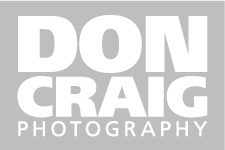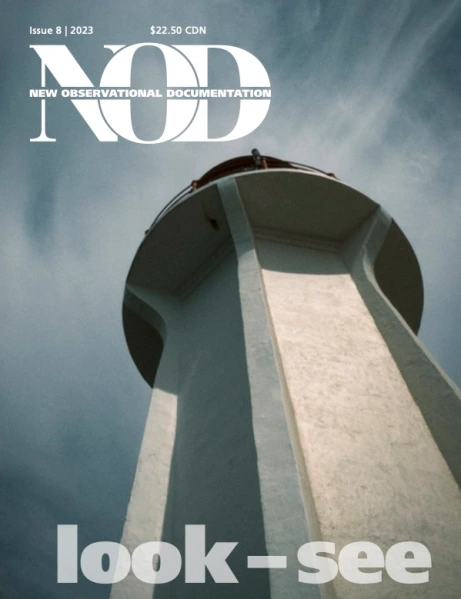Which camera will do the job? Some thoughts on the Fujifilm X30.
After a brief affair with using work DSLRs again for, well, work, I wholeheartedly returned to just using my X-cameras and XF lenses. Phew, that feels better! So, I’m much happier in my work photography using my X-T1 and X-E2 exclusively. However, this has had an effect on my personal photography. I’m hardly picking up a camera to shoot for myself anymore, as the cameras live at work and I have to remember to bring one home, with the appropriate lens, in order to do any personal photography. Yeah, I know, poor me.
My whining not withstanding, I have been missing having a carry-around camera with me all of the time. Before I sold my X100S, it was my take-it-with-me-everywhere-I-go camera. Considering how much I shoot on the street, the X100S was the perfect camera to take with me. Everywhere. Needs must, I sold the X100S. I have used the X-E2 for most of my personal shooting since then, but most of the time, it stays at work. So, I started to think about what I should do to fill this self-made gap.
After testing the X-T10, I considered it as a replacement for the X100S. Of course, the X100T is also an obvious choice as a replacement. But, prior to spending any money on a third camera body, I thought that I would give the Fujifilm X30 a serious and long look. Before you ask, here is the spec page over at the Fujifilm.ca site.
What do I want to shoot?
- Street photography?
- Double exposures?
- Portraits?
- Long exposures?
- Low light situations?
The answer to all of them is “yes.” Does one camera have to do all of these things well in order for me to consider it? It turns out the answer is “no!”
Hard to beat, on the street
The X30 is compact, quiet (actually silent, if you want that) and a dream for street photography. Given the smaller sensor size, f/4.0 to f/5.6 aperture will give you lots and lots of depth of field for scale focusing. Since the lens’ widest angle of view is 28mm (full-frame equivalent), the X30 is ideal for street photography. That is where it stays, most of the time, when I’m shooting on the street. However, the focal length can be extended to 110mm, when the need arises. Pretty versatile.
Because one can shoot wider open with the smaller sensor, you don’t have to go above ISO 800 in most daylight situations. You won’t often want to go above ISO 800 with this size sensor, as it gets pretty noisy, pretty fast. Noise generated between ISO 400 and 800 isn’t bad and reminds me of film grain. The articulated LCD screen can be angled so that you can look down at the camera to take shots, instead of raising the X30 to your eye. In the bright, high-contrast situations that I favour, this doesn’t work well because the screen is difficult to see. The articulated screen is much handier for other types of photography, in my opinion, and nice to have. For shooting on the street, I prefer to scale focus and I only occasionally bring the camera to my eye to shoot.
The X30’s EVF is fantastic. Like the rest of the X-cameras, it can preview exposure in real-time. Not only is this great for any type of ambient light photography it is also great for tweaking the film simulation modes.
Film simulation
A lot has been written about the great out-of-camera JPEGs produces by the X-trans sensors found on the Fujifilm X-series cameras. The X30 also produces fantastic JPEGs. I rely upon them for nearly all of my shooting and I usually set it to BW with the yellow filter for shooting on the street. I also tweak the noise reduction, sharpness, highlights and shadows to produce files to my liking. With exposure preview turned on, you can quickly set up the particular look you want by making these adjustments in the Q menu.
If I shoot in colour, then I choose Classic Chrome. For portraits, I use Pro Neg Standard, which produces less saturated colours and more neutral tones. No matter which film simulation mode you select, you can customize them to your liking.
Exposure on top of exposure
The X30 is yet another X-camera that enables the creation of double exposures. Like the more advanced X-cameras, these are created by shooting the two exposures sequentially. You either get it right in those two shots or you don’t. No creating them after the fact with in-camera software. I find this type of shooting very satisfying and look for opportunities to create double exposures. Unlike the more advanced X-cameras, you don’t have as much control over exposure with the X30 when shooting double exposures. The camera determines the exposure variables within the constraints of the ISO or auto ISO setup. However, you can use exposure compensation to under or over expose either of the two exposures.
Head to head
In my work, I shoot lots of head shots. And, I usually use the X-E2 with the XF56mm f/1.2 lens for them. It’s a pretty sweet combination. Given that I control the light in-studio and shoot at the camera’s base ISO for the best quality image, I thought that I would give the X30 a try for portraiture. Setting the lens to “85mm” and aperture to f/2.8 and ISO to 100 (base for X30), I had comparable exposure to how I shoot with the X-E2 and XF56. What about shutter speed you ask! The X30 has a leaf shutter (remember, it’s quiet), which means I can sync at 1/1000 sec at f/2.8 if I want to. In studio, this means I can make a completely black background. Outside, this means I can balance flash with ambient light at large apertures. Not bad for a compact camera. I’m not saying that I will be using the X30 for work assignments, but it is pretty interesting to see what you can do with this small camera.
In hand
The X30 is small but not tiny. It is small enough to remain inconspicuous while being large enough for me to easily use all of the controls on the camera. The placement of the top dials and back buttons will feel familiar to any X-camera photographer. Zooming the lens is controlled by twisting the lens zoom ring with your left hand, while you control the camera with your right hand. The zoom ring also starts and shuts off the camera. Some people dislike this feature. I like it. Given that I sometimes, inadvertently switch on my larger X-cameras as I tote them in a bag, I like that the X30 doesn’t have the on/off switch by the shutter release.
The threaded shutter button, ready for a low-tech cable release, is always welcome. I love having this on any camera. Given that the X30 doesn’t have a Bulb shutter speed option, long-exposure shooting is limited to a maximum of 30 seconds. So, you can still get some use out of your cable release. Just not as much as you will with the X30’s big brother cameras.
WiFi capable
The X30 shares the advanced WiFi features of the X-T1 and X-T10. You can shoot remotely and transfer images using a smart phone or tablet. You can also print directly to the Instax Share printer from the camera. I use the WiFi functions often and now consider them an important feature set for any camera. It’s a long way from shooting film!
Low light = noise
While the smallish sensor in the X30 has benefits for street photography, there is an inevitable downside. That is poor low-light performance. The X30 can’t compete with the X-cameras with APS-C sensors. Above ISO 800 the noise on the X30 files becomes distracting. If all I had was the X30 in a low-light situation, I would still push the ISO as high as 1600. I may only shoot in BW then, as I used to with the Epson RD-1 and, in fact, the Leica M9. I frequently used those two cameras like I would BW film cameras, keeping ISO low. Similarly, I like using the X30 this way. The noise issue means that I wouldn’t be happy using the X30 for work photos (aside from portraits), where I am frequently shooting above ISO 1600. However, if I was shooting an outdoor event, I wouldn’t hesitate using the X30.
Checking the list
In answer to my question above, the X30 can handle most of what I shoot with ease, producing great results. Long exposures aren’t going to be the strength of this camera and low-light shooting won’t produce the type of results I might want, however for most of the rest of what I shoot, the X30 is very capable camera. Given that the shooting experience with the X30 is so close to using any of the X-cameras, I have really enjoyed having it with me all of the time and look forward to owning it. Now to sell a lens or two to cover the cost of buying it…
All photos captured with the Fujifilm X30, with the exception of the camera shots. Most are out-of-camera JPEGs. All images processed with Lightroom.




8 responses to “What do you want to shoot today?”
I make more money with the X30 than any of my other cameras. All the so called weaknesses turn into strengths for delivering emotional responses from the viewer. I have no trouble printing up to 16×20 inches with a nice fractal program like OnOne software.
David, I have made great, large prints from the X30 files as well. I like the camera more and more, as I use it. Essentially, it gets treated like a film camera that I have with me everywhere I go.
Thanks for reading.
[…] Which camera will do the job? Some thoughts on the Fujifilm X30. After a brief affair with using work DSLRs again for, well, work, I wholeheartedly returned to just using my X-cameras and XF lenses. Phew, that feels better! […]
[…] Which camera will do the job? Some thoughts on the Fujifilm X30. After a brief affair with using work DSLRs again for, well, work, I wholeheartedly returned to just using my X-cameras and XF lenses… […]
[…] Which camera will do the job? Some thoughts on the Fujifilm X30. After a brief affair with using work DSLRs again for, well, work, I wholeheartedly returned to just using my X-cameras and XF lenses… […]
[…] What do I want to shoot?Street photography?Double exposures?Portraits?Long exposures?Low light situations?The answer to all of them is “yes.” Does one camera have to do all of these things well in order for me to consider it? It turns out the answer is “no!” […]
I do love my Fuji and would love another one :)
Karen, thanks for reading. Yes, wouldn’t we all love to have as many cameras as we want/need!